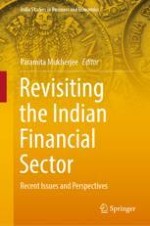2022 | OriginalPaper | Buchkapitel
Global Monetary Policies and Implications for Financial Flows to India and Other Emerging Markets
verfasst von : Sanket Mohapatra
Erschienen in: Revisiting the Indian Financial Sector
Verlag: Springer Nature Singapore
Aktivieren Sie unsere intelligente Suche, um passende Fachinhalte oder Patente zu finden.
Wählen Sie Textabschnitte aus um mit Künstlicher Intelligenz passenden Patente zu finden. powered by
Markieren Sie Textabschnitte, um KI-gestützt weitere passende Inhalte zu finden. powered by
